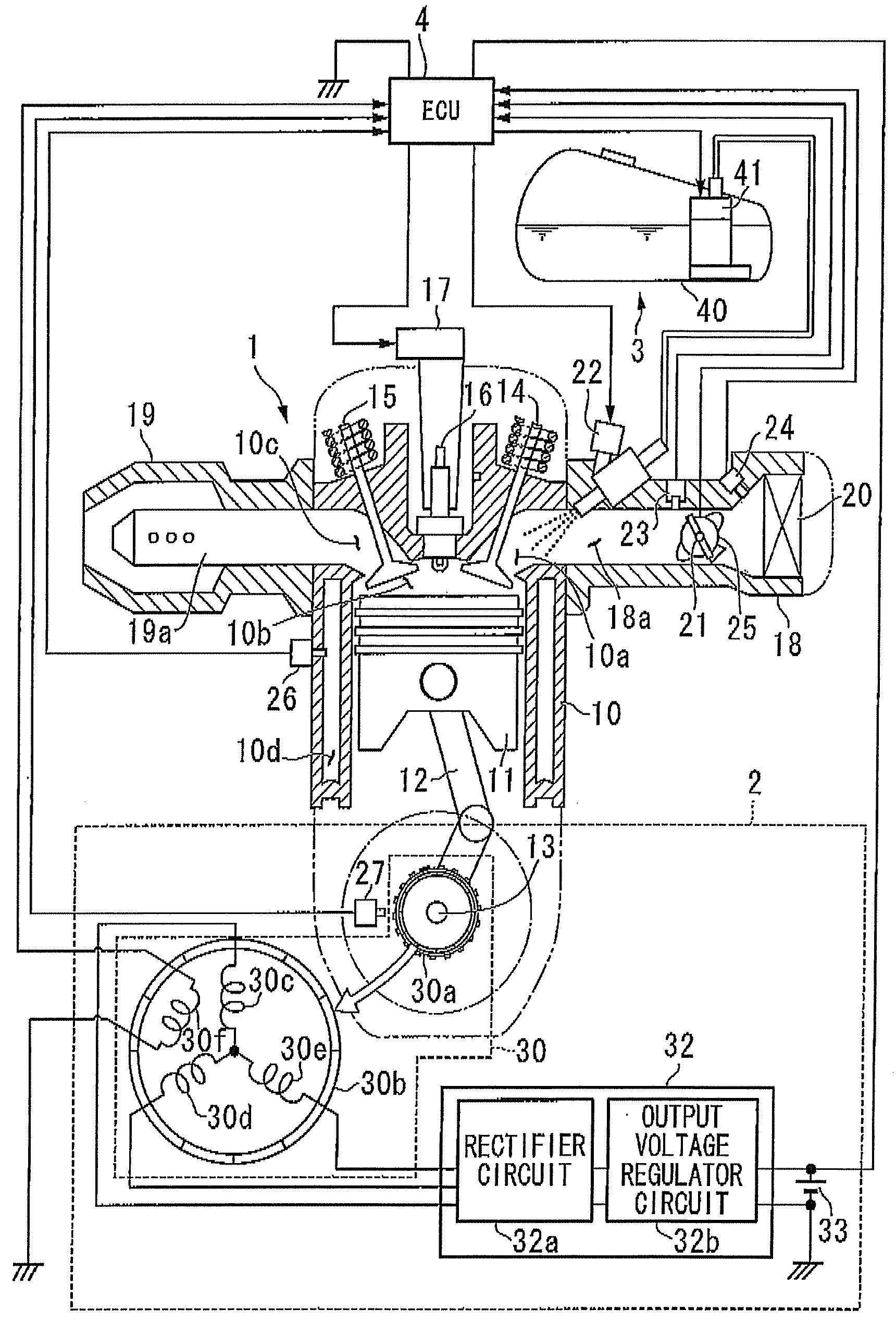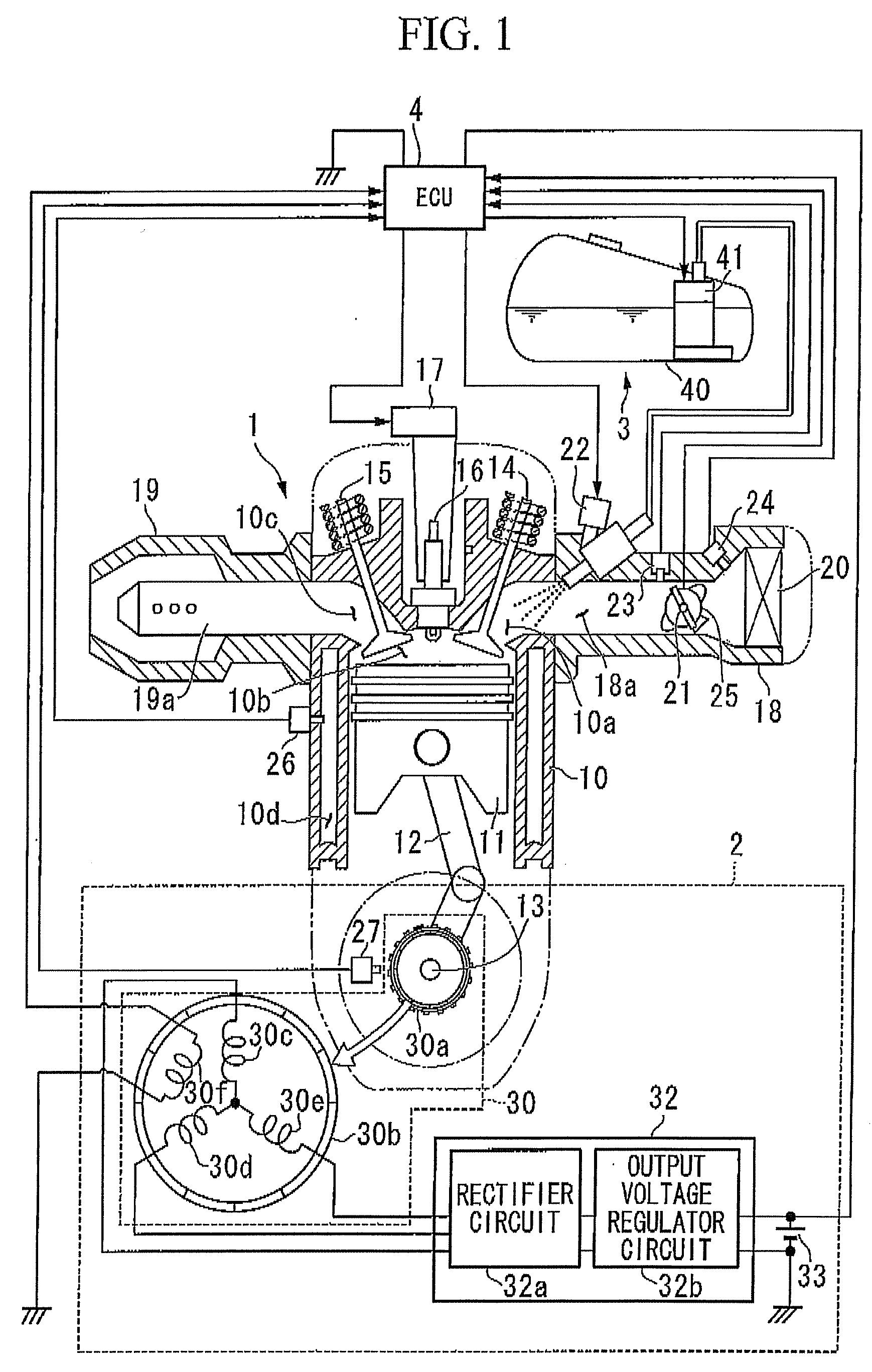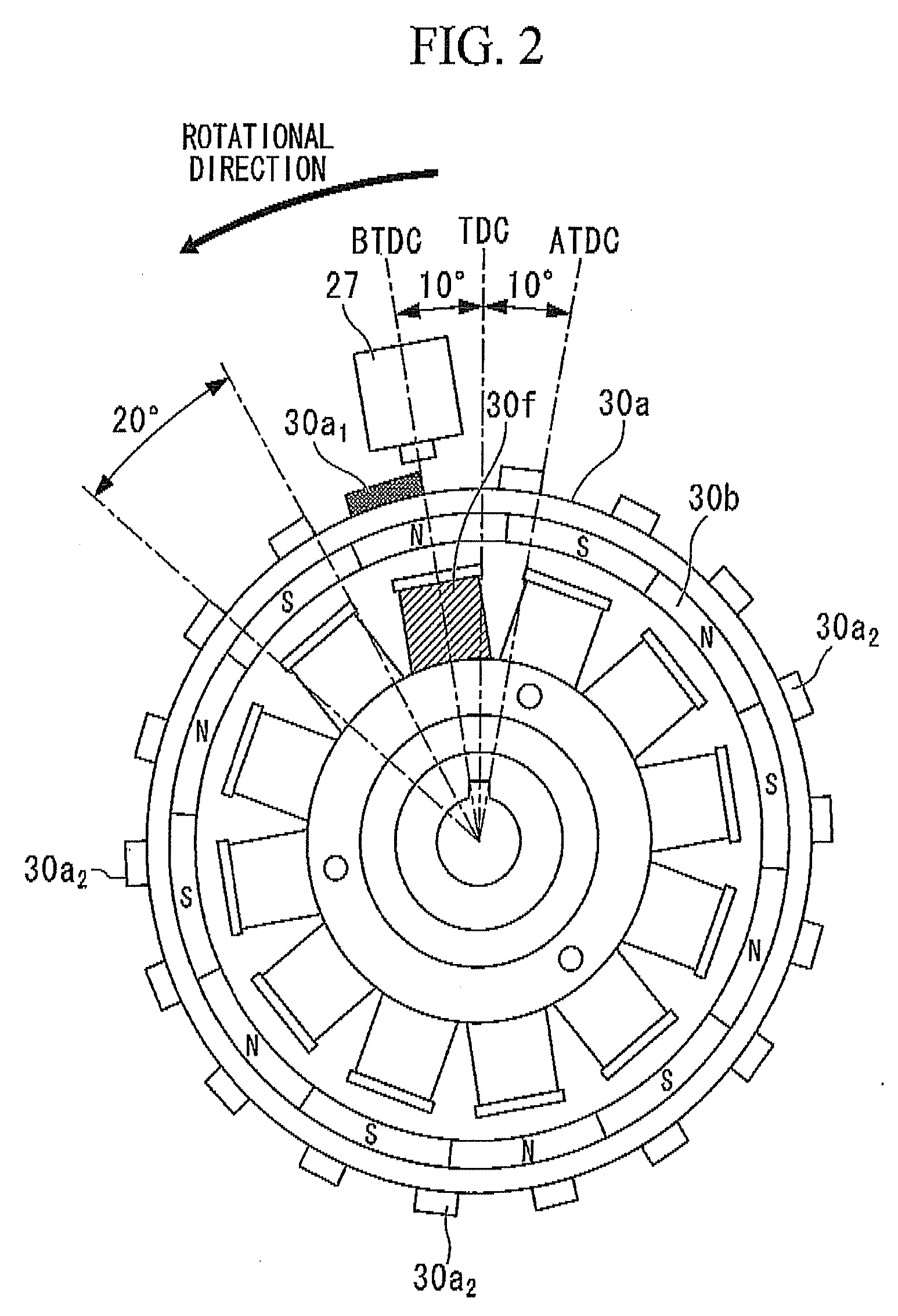Control apparatus for internal combustion engine
a control apparatus and internal combustion engine technology, applied in the direction of electric control, muscle operated starters, instruments, etc., can solve the problems of stalling, reverse rotation may be erroneously detected, and the startup of an internal combustion engine may be disabled, so as to prevent the start from being disabled
- Summary
- Abstract
- Description
- Claims
- Application Information
AI Technical Summary
Benefits of technology
Problems solved by technology
Method used
Image
Examples
first embodiment
[0135]Next, the reverse rotation prevention processing of an ECU 4 (in particular, a CPU 55) during the operation of an engine 1 in an engine control system that is provided with the ECU 4 (a control apparatus for an internal combustion engine) of a first embodiment that is constructed in the manner described above will be described.
[0136]In addition, as the reverse rotation prevention processing, the CPU 55 executes coil voltage polarity determination processing for determining the polarity of alternating voltage signals output from the reverse rotation detecting coil 30f, and reverse rotation detection processing for detecting the reverse rotation of the engine 1 on the basis of a polarity determination result by this coil voltage polarity determination processing in parallel. Hereinafter, the coil voltage polarity determination processing will first be described.
[0137]Coil Voltage Polarity Determination Processing
[0138]FIG. 4 is a timing chart showing the correspondence relations...
second embodiment
[0189]Next, the invention will be described.
[0190]In the second embodiment, release processing (hereinafter referred to as “reverse rotation release processing”) of a reverse rotation detection result of the ECU 4 (in particular, of the CPU 55) during the operation of the engine 1 in the engine control system that is provided with the ECU 4 (i.e., the control apparatus for an internal combustion engine) that is constructed in the manner described above will be described.
[0191]Specifically, in the reverse rotation release processing in the second embodiment, a case where the crank angle reference position has been detected after the detection of reverse rotation is determined to be returned to a forward rotation state, and the reverse rotation detection result (ignition output prohibition) is released.
[0192]In addition, in the following second embodiment, the same components as those of the above first embodiment are denoted by the same reference numerals, and the description thereof...
third embodiment
[0268]Next, the invention will be described.
[0269]In the reverse rotation release processing in the third embodiment, a case where 720° engine stroke determination has been completed after the detection of reverse rotation is determined to be returned to a forward rotation state, and the reverse rotation detection result (ignition output prohibition) is released.
[0270]In addition, in the following third embodiment, the same components as those of the above first and second embodiments are denoted by the same reference numerals, and the description thereof is omitted.
[0271]It is to be noted in the following description that the structure of the rotor 30a differs from that of the above second embodiment.
[0272]That is, as shown in FIG. 14, a rotor 30a′ used in the third embodiment has a structure in which auxiliary projections 30a2 are provided instead of the crank angle reference projections 30a1 and the auxiliary projections 30a2 that were provided in 70° and 90° positions backward f...
PUM
 Login to View More
Login to View More Abstract
Description
Claims
Application Information
 Login to View More
Login to View More - R&D
- Intellectual Property
- Life Sciences
- Materials
- Tech Scout
- Unparalleled Data Quality
- Higher Quality Content
- 60% Fewer Hallucinations
Browse by: Latest US Patents, China's latest patents, Technical Efficacy Thesaurus, Application Domain, Technology Topic, Popular Technical Reports.
© 2025 PatSnap. All rights reserved.Legal|Privacy policy|Modern Slavery Act Transparency Statement|Sitemap|About US| Contact US: help@patsnap.com



